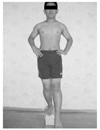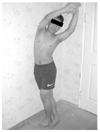Abstract
Running is becoming one of the most popular leisure sports. The growing popularity of running is due in part to its easy accessibility and health benefits. The incidence of running injuries ranges from 37% to 56%, which is still 2 to 6 times lower than in other sports. Most running injuries are musculoskeletal overuse syndrome of the lower extremities. The risk factors of running injuries include training errors, improper running surface, worn shoes, body flexibility, and prior injury. The knee is the most common site of injury and accounts for 25% to 33% of all, and patellofemoral stress syndrome is most commonly known as 'runner's knee'. Iliotibial band syndrome, medial tibial stress syndrome, plantar fascitis, Achilles tendinitis, and stress fracture are all common injuries among runners. The process of rehabilitation is to be divided into four stages according to the athlete's level of function; the initial stage, intermediate stage, advanced stage, and final stage.
References
1. Albert CM, Mittleman MA, Chae CU, Lee IM, Hennekens CH, Manson JE. Triggering of sudden death from cardiac causes by vigorous exertion. N Engl J Med. 2000. 343:1355–1356.

2. Lane NE, Bloch DA, Jones HH. Long-distance running, bone density, and osteoarthritis. JAMA. 1986. 255:1147–1151.

4. Van Mechelen W. Running injuries. A review of the epidemiological literature. Sports Med. 1992. 14:320–325.
5. Walter S, Hart L, McIntosh J, Sutton J. The Ontario Cohort Study of running-related injuries. Arch Intern Med. 1989. 149:2561–2564.

7. Jacobs S, Berson B. Injuries to runners: A study of entrants to a 10,000 meter race. Am J Sports Med. 1986. 14:151–155.

8. Macera CA. Lower extremity injuries in runners. Advances in prediction. Sports Med. 1992. 13:50–57.
9. Fredericson M, Bergman AG. A comprehensive review of running injuries. Crit Rev Phys Rehabil Med. 1999. 11:1–34.

10. Fredericson M. Common injuries in runners. Diagnosis, rehabilitation and prevention. Sports Med. 1996. 21:49–72.
11. Wen DY, Puffer JS, Schmalzried TP. Lower extremity alignment and risk of overuse injuries in runners. Med Sci Sports Exerc. 1997. 29:1291–1298.

12. Brody DM. Techniques in the evaluation and treatment of the injured runner. Orthop Clin North Am. 1982. 13:541–558.

13. O'connor FG, Wilder RP, editors. Textbook of running medicine. 2001. New York: McGraw-Hill;48–57. 157–180. 512–513.
14. Valmassy RL, editor. Clinical biomechanics of the lower extremities. 1996. St. Louis: Mosby-Year Book;78–79.
15. Lun V, Meeuwisse WH, Stergiou P, Stefanyshyn D. Relation between running injury and static lower limb alignment in recreational runners. Br J Sports Med. 2004. 38:576–580.

17. Bergman AG, Fredericson M, Ho C, Matheson GO. Asymptomatic tibial stress reactions: MRI detection and clinical follow-up in distance runners. Am J Roentgenol. 2004. 183:635–638.

18. Johnson AW, Weiss CB, Wheeler DL. Stress fractures of the femoral shaft in athletes more common than expected: A new clinical test. Am J Sports Med. 1994. 22:248–256.

19. Fredericson M, Bergman AG, Matheson GO. Stress fractures in athletes. Orthopade. 1997. 26:961–971.

20. Fredericson M, Bergman AG, Hoffman KL, Dillingham MS. Tibial stress reaction in runners: Correlation of clinical symptoms and scintigraphy with a new magnetic resonance grading system. Am J Sports Med. 1995. 23:472–481.
21. Bergman AG, Fredericson M. MR imaging of stress reactions, muscle injuries, and other overuse injuries in runners. Magn Reson Imaging Clin N Am. 1999. 7:151–174.

22. Freslon M, Soyer J, Iborra JP, Hadjadj S, Pries P, Clarac JP. An unusual cause of a stress femoral fracture in a long-distance runner: a case of bilateral fracture. J Trauma. 2004. 56:433–436.





 PDF
PDF ePub
ePub Citation
Citation Print
Print








 XML Download
XML Download